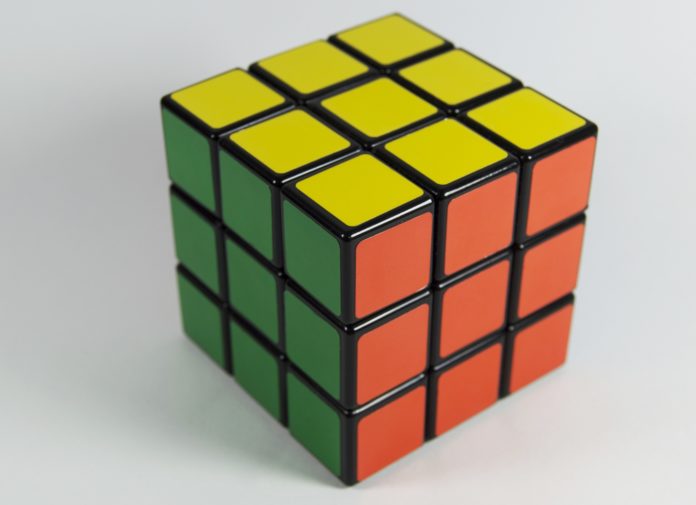Seating arrangement is an important question type for SBI PO exam. When we analyze the SBI PO Previous Papers, we realize that seating arrangement contributes 10 percent of the questions in SBI PO prelims. It has a significant weightage in the mains exam as well. Hence, it is imperative to know the methods to solve the seating arrangement questions for SBI PO exam.
SBI PO is a highly competitive exam. Nearly 3 million people enroll for the exam, and only a couple of lakh student are able to clear the preliminary examination. The cutoff can vary according to the difficulty level of the exam. The key to clear the SBI PO prelims stage is to understand the questions which hold high value. Along with data interpretation for SBI PO, the seating arrangement falls under the category of high-value questions. It can fetch you 10 easy marks which can be instrumental in qualifying for mains. Knowing how to solve seating arrangement questions for SBI PO will also help you in mains exam.
SEATING ARRANGEMENT QUESTIONS FOR SBI PO
There are two varieties in seating arrangement questions. These are ‘Linear Arrangement’ and ‘Circular Arrangement.’ We will discuss both these types in this post.
Let’s start with linear arrangement type questions.
Download SBI PO Mains Syllabus 2018 PDF
Take Free Mock Tests for Banking exams
LINEAR ARRANGEMENT
In this type of arrangement, people are seated in a straight row. All the people may be facing the same direction, or they may be facing different directions as well. However, seating arrangement questions for SBI PO are mostly based on the type where people are facing the same direction.
When all people are facing the same direction, the most important thing is to use the given clues effectively. Instead of using the clues in the sequential manner, look for the most direct clue. For example, say the two clues are as given below.
Ram is third to the right of Ravi
Mukesh is fifth from the left end
The first is an indirect clue as we do not know the absolute position of any person. The second clue is a direct clue as it gives the absolute position of the person. Hence, whenever you are solving the seating arrangement questions for SBI PO, make sure you use all the direct clues before moving on to the indirect clues. This will help you reduce the possibilities. In cases where people are facing different directions, the direct clues become even more important.
TERMINOLOGIES
There are a few important terminologies which need to be understood before you start solving seating arrangement questions for SBI PO. If it is given that X is seated to the right of Y, then X can be any position to the right of Y. Unless, it is given that X is to the immediate right of Y, never assume such thing. Secondly, if it is given that X is third to the right of Y, then it means that 2 people are sitting between X and Y. Third to the right does not mean that 3 people are sitting between the two. This should also be kept in mind.
EXAMPLE:
Let’s solve an example to see the application of the things that we have studied.
8 friends A, B, C, D, E, F, G and H are sitting in a straight row facing north. B is third to the right of A. G is third from the right end. There are 3 people between C and B and C is to the left of B. H is not E’s neighbor and D is sitting at one of the extreme ends. F is adjacent to B but he is not sitting at an extreme end.
We can make a table with as shown below.

G is third from the right end. So G must be sitting at the 6th position. B is third to the right of A and there are 3 people between B and C. C is also to the left of B. So, C must be to the immediate left of A. Now there are 3 possibilities for B. The possibilities are as shown below



D is sitting at one of the end positions. So in case I, D must be at position 1. Since F is adjacent to B so F must be at 7. But this would mean that H and E will be sitting together. This contradicts the given information. Hence, case I is not possible.
In case II, F would be sitting at 8. But F is not sitting at the end position. This is not possible.
In case III, F would be at 4, D would be at 8. H and E will sit at 3 and 7 in any order. Thus, our final arrangement would be as shown below.
![]()
Thus, we can see that questions on linear arrangement are fairly easy.
Let’s discuss the other type of seating arrangement questions for SBI PO exam
CIRCULAR ARRANGEMENT
The format of circular arrangement is same as that of linear arrangements. However, people are seated around a circular table instead of being seated in a row. People can face any direction. The seating arrangement questions for SBI PO are limited to people facing the same direction (mostly towards the center of the table).
In this type of arrangement as well, it is important to make a good use of the given clues. Direct clues should be used well before the indirect clues. It will reduce the number of cases. In a circle, the positions are not fixed. Hence the meaning of direct clues is slightly different in the case of circular arrangements. Consider the following 3 clues
A is sitting opposite to B
C is third to the right of D
F is not sitting adjacent to D or B
Here both first and second clues are direct clues. This is because they are giving someone’s position relative to some other person. The last clue is not a direct clue because it is not giving F’s position relative to anyone. Hence while solving circular seating arrangement questions for SBI PO, one should be careful about these aspects.
For a better understanding of how to approach seating arrangement questions for SBI PO, let us solve an example
EXAMPLE
8 friends P, Q, R, S, T, U, V and W are sitting around a circular table. All of them are facing inwards. Q is third to the right of P. W is opposite to R. S is second to the right of V and V is second to the right of U. Neither W nor R is P’s neighbour.
Q is third to the right of P. So we can seat P anywhere and then Q would be third to his right. Now W and R are sitting opposite to each other. There are two possibilities for W and R. These are as shown in the figure.


However, the first case is not possible as neither W nor R is adjacent to P. V is second to the right of U and S is second to the right of V. Hence S must be 4th to the right of U. Thus, S will be opposite to U. This is only possible when S is to the immediate right of P. V and U can sit accordingly. Now, only one place remains empty. It must be occupied by T. Thus, our final arrangement is like the one shown below.

Hence it can be seen that questions on circular seating arrangement are also very easy.
CONCLUSION
Thus from our discussion, it becomes evident that seating arrangement questions for SBI PO are fairly easy. A little bit of practice can make it a highly scoring area for students. Thus, you should practice seating arrangement questions from previous years papers. You can also take Free Mock Tests for SBI PO on our website. We have similar blog posts for many other topics. These posts can be really helpful in your preparation. You can find these posts at the below-given links.
All the best!!





![How To Manage Time In CAT Exam? [Section-wise Tips] How to manage time in CAT exam ?](https://cracku.in/blog/wp-content/uploads/2018/09/fig-03-09-2018_10-54-46-218x150.jpg)